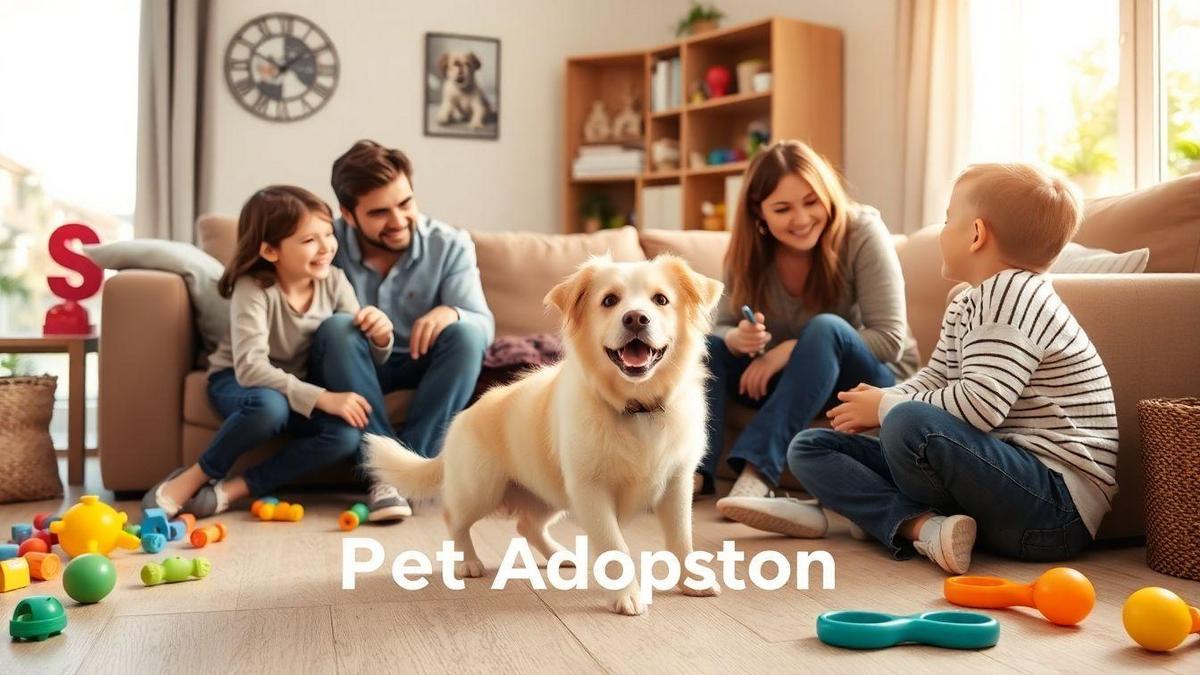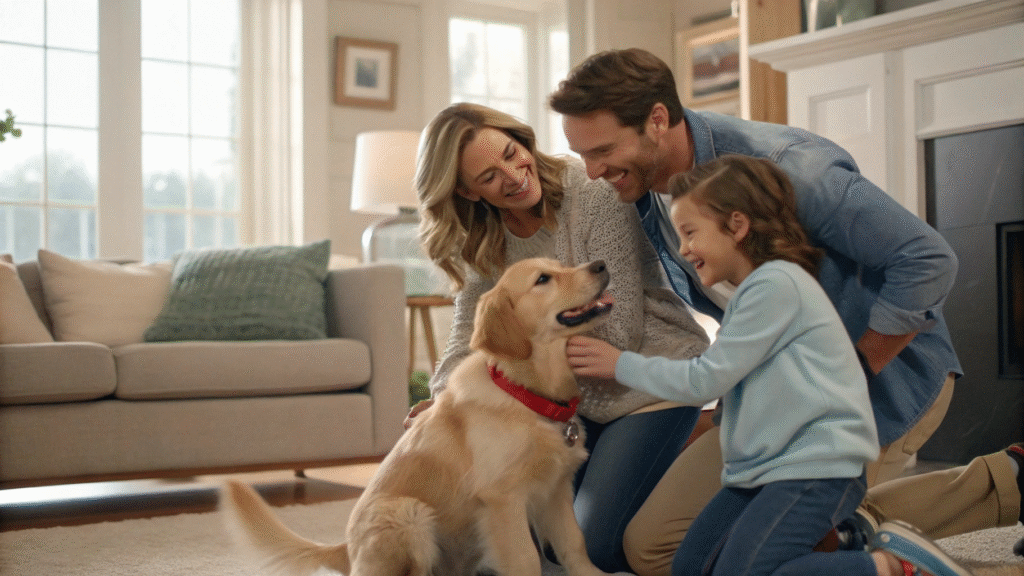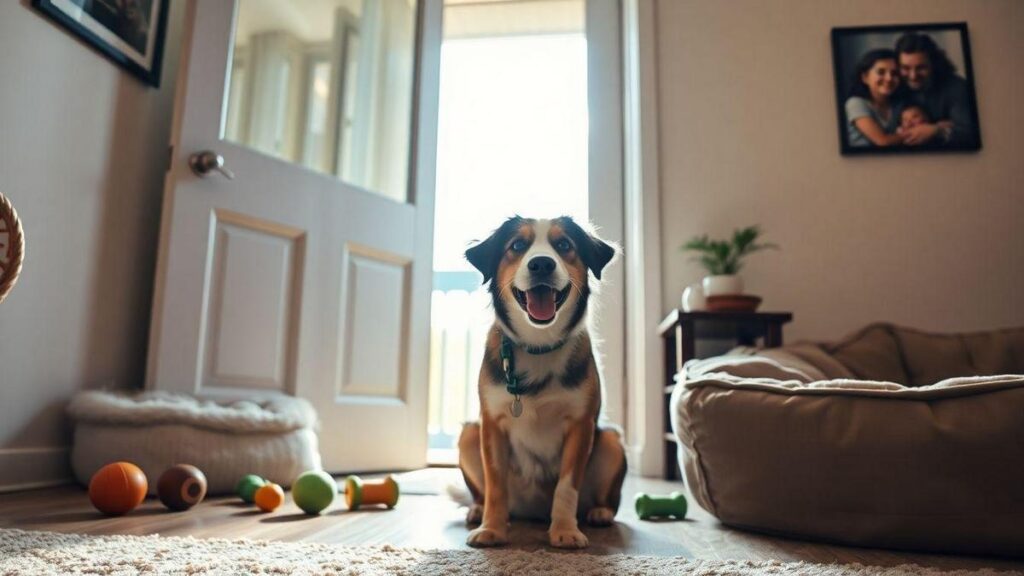The Ultimate Guide: How to Successfully Adopt a Dog is here to help you bring a furry friend into your home! You’re about to discover why dog adoption is an amazing choice, how to pick the perfect pup, and what you need to prepare before that little tail starts wagging. Whether you’re a first-time adopter or looking to welcome another dog into your family, this guide is packed with useful tips and insights to make your journey smooth and fun. Let’s dive in!
Key Takeaways
- Choose the right dog for your lifestyle.
- Prepare your home for a new pet.
- Start training as soon as you adopt.
- Keep up with regular vet visits.
- Be patient and loving during the adjustment period.

Summary
The Ultimate Guide: How to Successfully Adopt a Dog
Why Dog Adoption is a Great Choice
Dog adoption is one of the best decisions you can make, not just for yourself but for the furry friend who needs a home. Millions of dogs in shelters are waiting for someone to love them. When you adopt a dog, you’re giving them a second chance at life. Isn’t that a wonderful feeling? Plus, adopting a dog can bring so much joy and companionship into your life.
Think about it: Dogs are loyal, loving, and can be a huge source of comfort. They’re always there to greet you when you come home, and their wagging tails can brighten even the toughest days. And let’s not forget about the health benefits! Having a dog can reduce stress, encourage you to exercise, and even lower blood pressure. It’s like having a little furry therapist by your side.
Adopting a dog also helps fight against puppy mills and irresponsible breeding. You’re making a statement that you value life and want to support ethical treatment of animals. It’s a win-win situation! So, if you’ve been on the fence about adopting, just remember: it’s not just a pet; it’s a new family member.
Dog Adoption Tips: What You Need to Know
Alright, so you’ve decided to adopt a dog. That’s awesome! But before you jump in, there are some important tips to keep in mind. First off, do your research. Not all dogs are the same, and different breeds have different needs and temperaments. Some might be super active, while others are more laid-back. Think about your lifestyle and what kind of dog would fit in best. For more insights, check out essential tips for dog adoption.
Next, consider visiting local shelters or rescue groups. Spend some time with the dogs to see which one catches your eye. Don’t rush the process; it’s important to find a dog that matches your energy levels and lifestyle. And don’t be afraid to ask questions! The staff at these places usually know the dogs well and can help guide you to the right match.
Also, keep in mind that adopting a dog comes with responsibilities. You’ll need to budget for food, vet visits, grooming, and training. It’s not just about the initial adoption fee; it’s about the ongoing costs of caring for a pet. Make sure you’re ready for that commitment, and consider the first-year pet care expenses to plan accordingly.
Lastly, be patient. It can take time for a dog to adjust to a new home. They might be a bit shy or anxious at first, and that’s totally normal. Just give them the love and support they need, and they’ll come around.
Choosing the Right Dog for Your Family
Choosing the right dog is crucial for a happy household. You want to find a pup that fits in well with your family dynamics. If you have young kids, you might want a dog that’s known to be good with children. Breeds like Labrador Retrievers or Beagles are often great choices. They’re friendly and usually have a lot of energy to keep up with little ones.
On the other hand, if you’re living in a smaller space or don’t have a lot of time for exercise, a smaller breed or a more laid-back dog could be a better fit. Think about breeds like French Bulldogs or Cavalier King Charles Spaniels. They can thrive in smaller living spaces and don’t require as much exercise.
Another thing to consider is the dog’s age. Puppies are adorable, but they require a lot of time and training. If you’re a busy person, an older dog might be a better choice. They’re often already trained and can be a lot more mellow. Plus, older dogs are usually overlooked in shelters, so you’d be doing a good deed by giving one a loving home. For more on this, read about why adopting older dogs is beneficial.
Lastly, don’t forget about mixed breeds! They can be just as loving and loyal as purebreds, and they often have fewer health issues. So, keep an open mind and don’t be afraid to fall in love with a dog that might not fit the typical mold.
Preparing Your Home for a Dog: A Simple Checklist
So, you’ve picked out your new furry friend. Now it’s time to get your home ready for their arrival. Here’s a simple checklist to make sure you’re all set:
- Dog-proof your space: Just like you would baby-proof for a toddler, you need to make your home safe for a dog. Remove any hazardous items like cleaning supplies, electrical cords, and small objects they could swallow.
- Create a cozy space: Set up a comfortable spot for your dog to sleep. This could be a dog bed or a cozy blanket in a quiet corner. Dogs love having their own space to retreat to.
- Stock up on supplies: You’ll need food and water bowls, high-quality dog food, a collar and leash, and some toys. Don’t forget about grooming supplies like brushes and nail clippers, too. For guidance on selecting the best food, check out this resource on the best dog food.
- Identify a vet: Before your new buddy arrives, find a local veterinarian. Schedule a check-up soon after adoption, and make sure they’re up to date on vaccinations. You can find out more about the importance of vet check-ups for pets.
- Plan for exercise: Dogs need regular exercise to stay healthy. Make a plan for daily walks or playtime in the yard. It’s a great way for you both to bond and get some fresh air. Discover how daily walks improve dog behavior.
- Set boundaries: Decide which areas of your home are off-limits. You might want to keep them out of bedrooms or off the furniture at first. Consistency is key!
- Prepare for training: Think about how you want to approach training. Will you take classes or do it at home? Having a plan in place will help you get started on the right foot.
By taking these steps, you’ll create a welcoming environment for your new dog, making it easier for them to adjust to their new home.
Dog Training Basics: Getting Started
Training your dog is one of the most important things you can do as a pet owner. It helps establish a bond and ensures your dog knows what’s expected of them. Plus, a well-trained dog is usually a happier dog!
So, where do you start? First, keep it simple. Begin with basic commands like sit, stay, and come. These are essential for good behavior and can keep your dog safe. Use positive reinforcement, like treats or praise, to reward them when they get it right. Dogs respond really well to encouragement!
Consistency is super important, too. Use the same commands and gestures every time. If you’re teaching sit, don’t switch it up with sit down or get down. It can confuse them, and we don’t want that.
Also, keep training sessions short and fun. Dogs have short attention spans, so aim for 5 to 10 minutes at a time. You can always come back for more later. And don’t forget to be patient! Some dogs pick up commands quickly, while others may need a bit more time.
Socialization is another key part of training. Introduce your dog to different people, environments, and other dogs. This helps them feel comfortable in various situations and reduces anxiety.
Lastly, consider enrolling in a training class. It can be a great way for you and your dog to learn together, plus you’ll get support from a professional trainer.
Adjusting to a New Pet: What to Expect
When you bring a new dog home, it’s a big change for both of you. They’re in a new environment, and it can be overwhelming. Expect some adjustment time, and don’t worry if things aren’t perfect right away.
Your new dog might be shy or anxious at first. They may hide or seem unsure about their new surroundings. This is totally normal! Give them space to explore at their own pace. Create a calm environment and let them get comfortable with their new home.
You might also notice some behavioral quirks. Maybe they bark a lot or seem to be a bit clingy. Just remember, they’re trying to figure things out. Be patient and reassure them with your presence.
Establishing a routine can help your dog feel more secure. Set regular times for feeding, walks, and playtime. Dogs thrive on routine, and it can help them adjust faster.
And don’t forget about your own feelings. It’s normal to feel a little overwhelmed, especially in the beginning. Just take it one day at a time, and soon you’ll both settle into a nice rhythm.
Caring for a Newly Adopted Dog: Daily Needs
Caring for your new dog is a big responsibility, but it’s also incredibly rewarding. Daily care involves several key aspects to keep your pup happy and healthy.
First off, feeding. Make sure you’re giving them high-quality dog food that’s appropriate for their age and size. Follow the feeding guidelines on the package, but also pay attention to your dog’s needs. Some dogs may require more or less food based on their activity level. For more on dog nutrition, explore natural dog food diets.
Next up, exercise. Dogs need regular physical activity to stay healthy. This can be walks, playtime in the yard, or even trips to the dog park. Aim for at least 30 minutes of exercise daily, but adjust based on your dog’s breed and energy level.
Don’t forget about grooming! Depending on the breed, your dog may need regular brushing, baths, and nail trimming. Establish a grooming routine that works for both of you. It can be a great bonding experience, and you can find tips in our pet groomer tipping guide.
Regular vet check-ups are also essential. Schedule annual visits for vaccinations and health checks. If you notice any changes in behavior or health, don’t hesitate to reach out to your vet. You can compare options with dog insurance comparison.
Lastly, give your dog plenty of love and attention. Spend time playing, cuddling, and just being together. Dogs thrive on companionship, and this will help strengthen your bond.
Common Challenges in Dog Adoption and How to Overcome Them
Adopting a dog can come with its share of challenges. But don’t worry, you’re not alone! Here are some common issues and how to tackle them.
One of the biggest challenges is behavioral issues. Some dogs may have anxiety, aggression, or other behavioral quirks, especially if they’ve had a tough past. The key here is patience and understanding. Consistent training and socialization can help address these behaviors.
Another common issue is adjusting to house training. Accidents are bound to happen, especially in the beginning. Just remember to stay calm and consistent. Take your dog outside regularly and reward them when they go in the right spot.
Sometimes, dogs may struggle with separation anxiety. If your new pup seems distressed when you leave, try gradually increasing the time you’re away. Start with short periods and build up. Providing toys or treats can also help keep them occupied while you’re gone.
If you’re facing challenges, don’t hesitate to seek help. Professional trainers or behaviorists can offer valuable guidance and support. There’s no shame in asking for assistance – it shows you’re committed to giving your dog the best life possible.

Understanding Dog Behavior: Key Insights
Understanding your dog’s behavior can make a world of difference in your relationship. Dogs communicate in their own unique ways, and learning to read their signals is key.
For example, wagging tails usually mean a happy dog, but not always! Sometimes a wagging tail can indicate excitement or even nervousness. Pay attention to the rest of their body language. A relaxed body and a wagging tail usually mean they’re happy, while stiff body language can signal stress.
Another important behavior to note is barking. Dogs bark for various reasons – to alert you, seek attention, or express anxiety. Try to figure out what’s causing the barking. If it’s excessive, you may need to work on training to reduce it.
Also, watch for signs of stress. If your dog is panting, pacing, or hiding, they might be feeling anxious. Create a calm environment and give them space to relax.
And don’t forget about playtime! Dogs are social creatures and need mental and physical stimulation. Playtime helps reduce boredom and can prevent unwanted behaviors.
Understanding these behaviors will help you respond appropriately, leading to a stronger bond between you and your dog.
Building a Bond with Your Dog: Tips for Success
Building a strong bond with your dog is one of the most rewarding parts of pet ownership. Here are some tips to help you create a lasting connection.
First off, spend quality time together. Play, go for walks, or just hang out on the couch. The more time you spend together, the stronger your bond will grow.
Training sessions are also a great way to connect. Not only does it teach your dog important skills, but it also strengthens your relationship. Use positive reinforcement and celebrate their successes, no matter how small.
Another tip is to engage in shared activities. Whether it’s hiking, playing fetch, or even just lounging together, finding activities you both enjoy can deepen your bond.
And don’t underestimate the power of touch. Petting, cuddling, and grooming can all help your dog feel loved and secure. Dogs thrive on affection, so don’t hold back!
Lastly, be patient. Building a bond takes time, especially if your dog has had a rough past. Just keep showing them love and understanding, and you’ll get there together.
Conclusion
So, there you have it! Adopting a dog is not just about bringing home a new pet; it’s about welcoming a new family member into your life. With the right preparation, patience, and love, you can create a wonderful bond that lasts a lifetime. Remember, each dog has its own unique personality, and the journey of getting to know them is part of the fun.
You’re not just saving a life; you’re gaining a loyal companion who will be there through thick and thin. So, roll up your sleeves, put on your best smile, and get ready for the adventure ahead! If you’re eager to learn more about caring for your furry friend or other tech tips, don’t hesitate to check out more articles at Tech Havela. Happy adopting! 🐾
Frequently Asked Questions
What should I consider before adopting a dog?
Think about your lifestyle. Do you have time for walks and play? Also, consider your living situation. Is your home pet-friendly?
How do I choose the right dog for me?
Consider size, energy level, and temperament. Think about what fits your family and activity level best.
Where can I adopt a dog?
You can adopt from shelters, rescue organizations, or breed-specific groups. Check local listings and websites.
What is involved in the adoption process?
The process usually includes an application, interview, and sometimes a home visit. Make sure you have all necessary paperwork ready.
How can I prepare my home for a new dog?
Create a safe space for your dog. Remove hazards and set up a cozy dog bed. Stock up on food, toys, and grooming supplies.
What should I do after bringing my dog home?
Give your new dog time to adjust. Introduce them to your home slowly. Stick to a routine for feeding and walks.
How does this fit into the Ultimate Guide: How to Successfully Adopt a Dog?
This guide provides tips and steps to make the adoption process smooth and rewarding for both you and your new furry friend!
**Sidnir Vieira**
Founder of TechHavela
A passionate pet and tech content creator, helping dog owners across the U.S. make smarter decisions for their furry friends.



